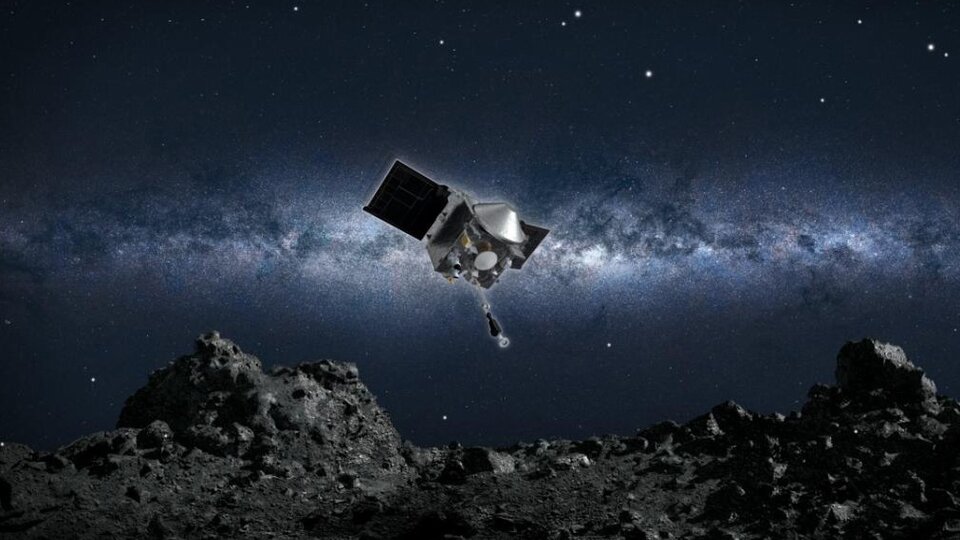
[ad_1]
The spaceship OSIRIS-REx of NASA it will carry out a final overflight at 3,700 meters of the asteroid Bennu on Wednesday, April 7, to study the imprint left on the surface after the collection of samples to Earth that it carried out on October 20.
The OSIRIS-REx team decided to add this last flyby after the asteroid’s surface was significantly disturbed by the sampling. During the landing, the spacecraft’s sample head sank 19 inches into Bennu’s surface and simultaneously fired a pressurized charge of nitrogen gas.
Additionally, the spacecraft’s thrusters also mobilized a substantial amount of surface material during recoil combustion. Because Bennu’s gravity is so low, these various forces of the spacecraft had a dramatic effect on the sampling site, throwing a lot of rocks and dust from the area in the process.
Bennu’s final flyby will provide the mission team with the opportunity to learn how the spacecraft’s contact with the asteroid’s surface altered the sample site and the region around it. During the flyby, one of the observation sequences carried out during the detailed reconnaissance phase of the mission in 2019 will be imitated.
OSIRIS-REx will photograph Bennu for six hours, which is little more than a period of full rotation of the asteroid.. During this time, the spacecraft’s PolyCam imager will obtain high-resolution images of the northern and southern hemispheres of the asteroid and its equatorial region. The team will then compare these new images with the previous high-resolution images of the asteroid obtained two years ago.
Most of the spacecraft’s other scientific instruments will also collect data during the flyby, including the MapCam Imager, OSIRIS-REx Thermal Emission Spectrometer (OTES), OSIRIS-REx Visible and Infrared Spectrometer (OVIRS) . And the OSIRIS-REx laser altimeter (OLA). The work of these instruments will give the team the opportunity to assess the current state of each scientific instrument aboard the spacecraft, as dust has coated the instruments during sample collection.
After the Bennu flyby, it will take several days for the flyby data to be sent to Earth. Once the data is uploaded, the team will inspect the images. At this point, the team will also be able to assess the work of the scientific instruments, reports NASA.
The spacecraft will remain near asteroid Bennu until May 10, when the mission will enter its return cruise phase and begin its two-year journey to Earth.. As it approaches Earth, the spacecraft will release the Sample Return Capsule (SRC), which contains the rocks and dust collected at Bennu. The SRC will then travel through Earth’s atmosphere and land under a parachute at the Utah Rifle and Training Range on September 24, 2023.
Once recovered, the capsule will be transported to the conservation facility at the agency’s Johnson Space Center in Houston, where the sample will be collected for distribution to laboratories around the world, allowing scientists to study the formation of our solar system and Earth as habitable. planet.
.
[ad_2]
Source link
 Naaju Breaking News, Live Updates, Latest Headlines, Viral News, Top Stories, Trending Topics, Videos
Naaju Breaking News, Live Updates, Latest Headlines, Viral News, Top Stories, Trending Topics, Videos